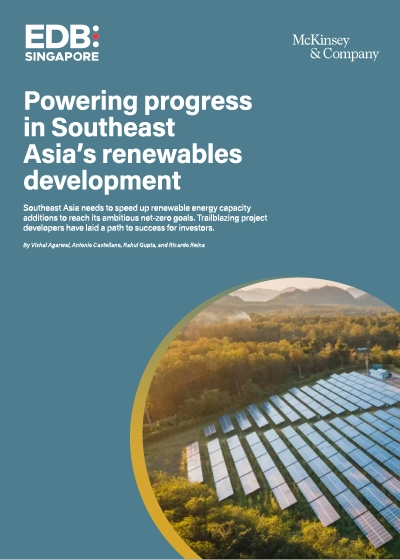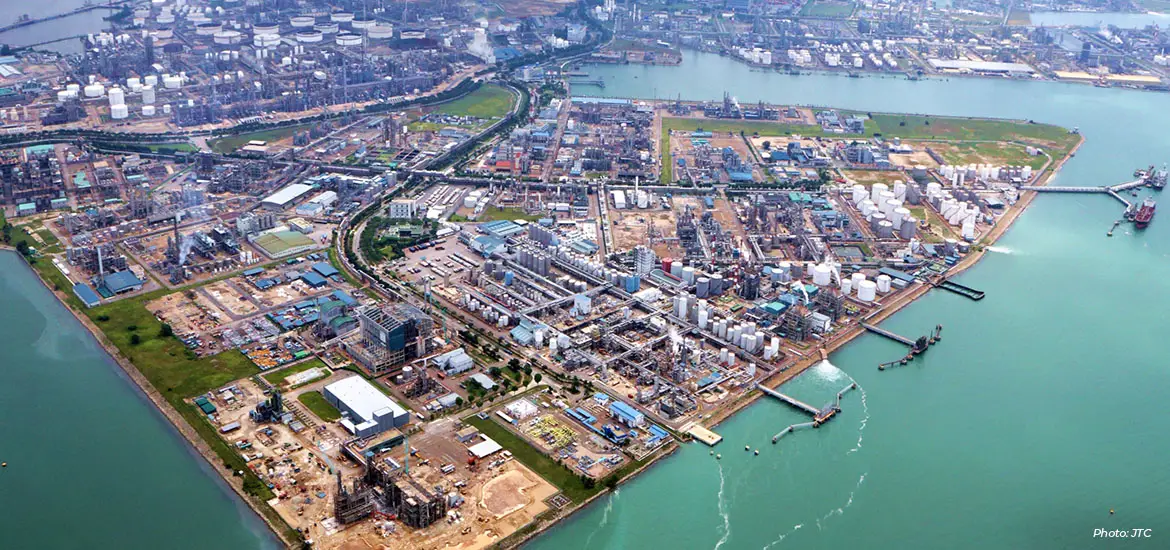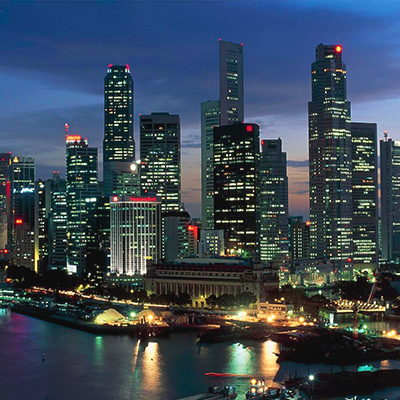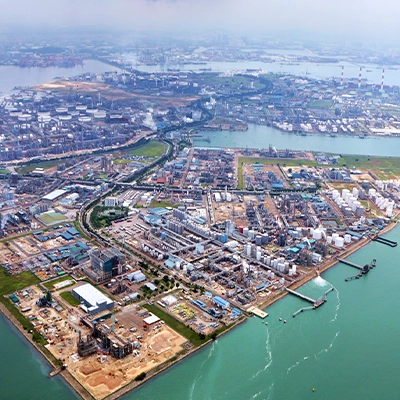Singapore’s energy and chemicals sector is its second-largest manufacturing sector and has long been a cornerstone of the nation's economy. Over 100 global chemicals companies operate here. Located in the heart of Asia, Singapore has established itself as a key hub for petrochemical production and trading. However, with changing global dynamics, the sector is now undergoing a significant transformation to stay competitive and sustainable.
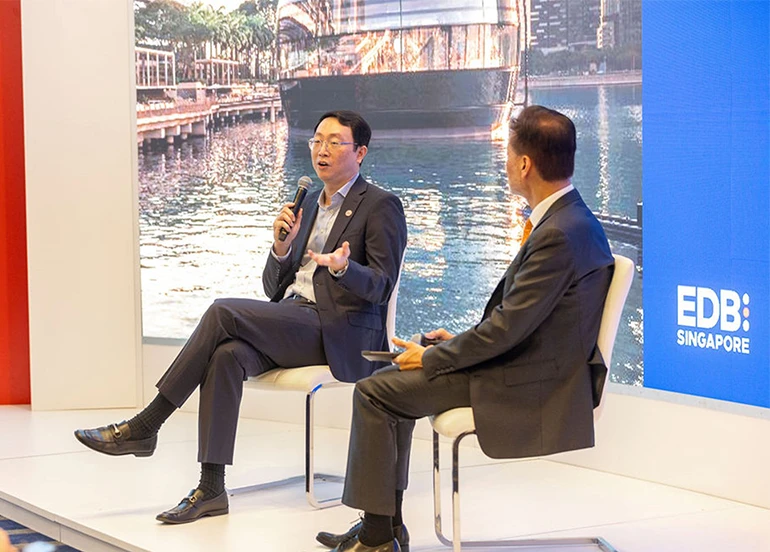
At the recent World Petrochemicals Conference, Lim Wey-Len, Executive Vice President at the Singapore Economic Development Board, highlighted key aspects of Singapore’s strategy to keep its energy and chemicals sector competitive.
Q: What are the broad trends shaping Singapore’s approach to growing its energy and chemicals industry?
Wey-Len: There continues to be demand for chemicals to support both infrastructure and consumer markets across Asia. Singapore, positioned at the heart of this dynamic region, serves as a gateway to these markets.
We have an extensive Free Trade Agreement network with our top trading partners that remain largely tariff free, including the Regional Comprehensive Economic Partnership (RCEP), which connects ASEAN with countries like China, Japan, and Australia, creating a vast economic space for Singapore-based companies.
In recent years, the global petrochemical industry has found itself in an extended, capacity-driven downcycle. For Singapore, we are working with our existing base to transform their operations to be more efficient, move up the value chain into higher value products such as specialty chemicals, and grow in the bioeconomy space.
By combining our traditional strengths in refining and petrochemicals with forward-looking strategies in sustainability, innovation, and specialty chemicals production, this transformation ensures our continued relevance in a changing global landscape.
Over 100 global chemical firms have located major operations here. Find out why Singapore is one of the world’s leading energy and chemical hubs
Q: Why is Singapore focusing on specialty chemicals?
Wey-Len: Over the past decade, Singapore’s specialty chemicals sector has steadily grown and now contributes approximately 20 per cent of our total energy and chemicals output. Globally, this sector has an average Compound Annual Growth Rate (CAGR) of 4.4 per cent compared to the overall chemicals CAGR of 1.5 per cent over the next 5 years.
Within specialty chemicals, we have identified four key areas that capture important growth trends: nutrition and agriculture; hygiene and health; smart materials and mobility, including electronics and semiconductors; and sustainability – particularly biotech, bio-based, and biodegradable materials.
Companies like SABIC have chosen to site their US$170 million (S$228.5 million) advanced, specialty chemicals manufacturing facility here, benefitting from Singapore’s robust intellectual property (IP) protection regime, logistical and trade connectivity.
Q: What about the bioeconomy?
Wey-Len: Arising from the energy transition globally, the energy and chemicals industry, too sees an emerging market for sustainable products. The global market for green chemicals is projected to reach US$200 billion (S$261.1 billion) by 2030, with a CAGR of 7.7 per cent between 2025 and 20351. This also builds upon Singapore’s capabilities in industrial biotechnology as part of our push for sustainable manufacturing.
Several companies have already anchored bio-based activities here. Arkema, for instance, has started production of its flagship high-performance polymer derived from renewable castor beans here. Chinese startup Mojia Bio recently announced a collaboration with the Agency for Science, Technology, and Research (A*STAR) on a S$44.8 million next-generation sustainable biomanufacturing platform aimed at producing eco-friendly bio-based molecules.
To support such developments, Singapore has research institute partners like the National Centre for Engineering Biology (NCEB), Singapore Integrative Biosystems and Engineering Research (SIBER), and Singapore Consortium for Synthetic Biology (SINERGY).
We are committed to working with companies to anchor the manufacturing of sustainable chemicals here. They can benefit from our access to bio-feedstock and raw materials from the region, fresh water supply, and wastewater treatment capacity. Singapore is also securing access to green electricity through low-carbon imports from the region that companies with operations here can access.
Q: What other opportunities does Singapore see in the energy transition?
Wey-Len: The energy transition has been a growth driver for Singapore. The market for alternative, sustainable products is growing, driven by regulations and changing consumer preferences.
For example, to promote Sustainable Aviation Fuel (SAF) use, the European Union, the United Kingdom, and Asia-Pacific countries like Japan, Thailand, and Singapore have announced mandates aiming for up to 10 per cent of SAF blending by 2030.
Companies like Neste have already established their Singapore Refinery & Innovation Centre, which includes the world’s largest SAF plant. Similarly, Evonik is building a new manufacturing plant for alkoxide catalysts used in biodiesel production to serve the Asian market.
As we chart our path to net zero, we are closely monitoring global developments as well as the pace of development of decarbonisation technologies.
Read about the latest Q1 2025 sustainability developments in Singapore for businesses
Q: What is Jurong Island and how is Singapore developing it?
Wey-Len: Jurong Island is Singapore's integrated energy and chemicals hub, and is home to over 100 energy and chemicals companies. In 2021, we launched the Sustainable Jurong Island strategy to transform it into a sustainable energy chemicals park – where companies not only operate sustainably and produce sustainable products for the world, but also pilot and testbed new innovations.
Existing companies are encouraged to take on energy efficiency or productivity projects, developing infrastructure for large-scale decarbonisation pathways such as carbon capture and storage (CCS). We are also developing end-to-end solutions in low or zero-carbon Ammonia and Hydrogen and biofuels such as SAF, which represent a significant growth opportunity.
Lastly, the energy transition requires continuous innovation. Singapore is pre-investing in capabilities, developing pilots and testbeds, and collaborating with companies on emerging low carbon solutions.
For businesses, Singapore offers a vibrant ecosystem comprising technology partners, research institutes (we have 17 research institutes and six universities), and co-innovators. Our bioenergy ecosystem is home to a vibrant mix of multinational corporations, small-to-medium enterprises, and startups, including over 80 leading regional headquarters, 30 research and development centres, and 60 manufacturing plants employing 25,000 staff.
Add to that a strong IP protection regime, connectivity to Asian markets and feedstock sources, and a supportive government that plans long-term and is prepared to invest in R&D, new capabilities and infrastructure to support industry needs. For example, the Singapore government is investing over 1 per cent of GDP in R&D, about S$28 billion from 2021 to 2025.
